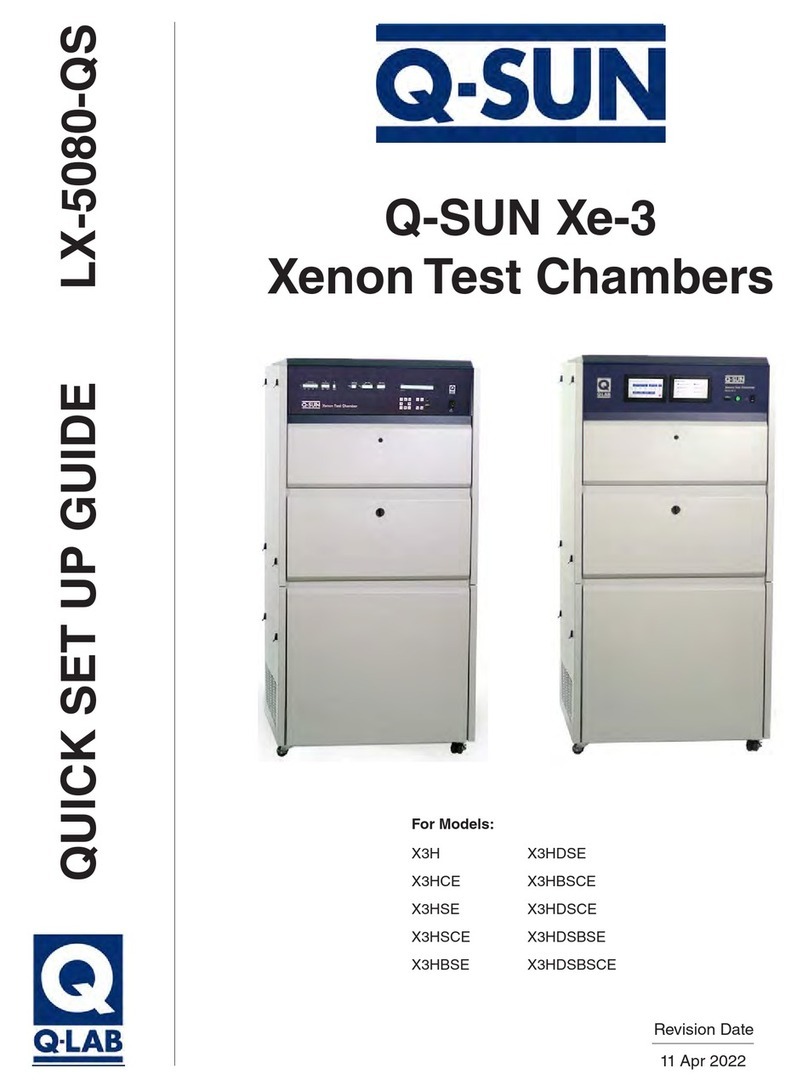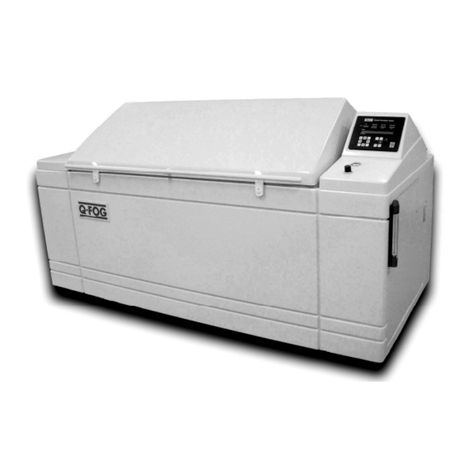
Section 2. Safety Information
5
2. Safety Information
Q-Lab accepts no responsibility for the consequences if the user fails to comply with the instructions in this operating
manual. Q-Lab will accept responsibility for defective parts or components only if the machinery was defective at the time
that the tester was shipped.
●This manual does not claim to address potential safety issues, if any, associated with the use of this product.
●It is the responsibility of the user of this manual to establish appropriate safety and health practices, and to
determine the applicability of regulatory limitations prior to use.
●If the equipment is used in a manner not specied by the manufacturer, the protection provided by the equipment
safety devices may be impaired.
●The Q-SUN meets the European Low Voltage Directive 2014/35/EU and complies with the requirements of
EN 61010-1: 2010 (Third Edition), “Safety of Electrical Equipment for Measurement, Control and Laboratory Use”.
●The Q-SUN meets the European Electromagnetic Directive 2014/30/EC and complies with the requirements of
EN 55011:2007 Radiated and Conducted Emissions – class A.
●Use only parts that have been supplied or recommended by Q-Lab.
2.1 Heat and Electrical Shock Hazards (Jun 2022)
Warning Labels
●Warning: If the equipment is used in a manner not specied by the manufacturer, the protection provided by the
equipment may be impaired.
●Doors (Figure 2.1a) provide access to tester interior spaces containing heat generating and/or electrical
components.
●Warning labels indicate heat and electric shock hazards inside the Q-SUN tester (Figure 2.1a and Figure 2.1b).
Figure 2.1a: Tester access door locations. Figure 2.1b: Hot surface and shock hazard warning labels.
Lower
Front Door
Left Side
Access Door
Right Side
Access Door
Test Chamber
Door
Lamp Door





























